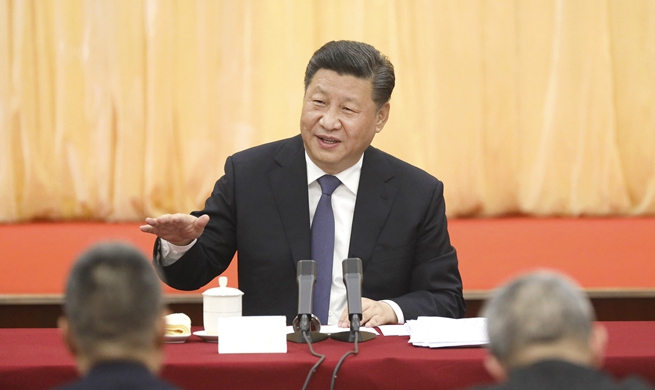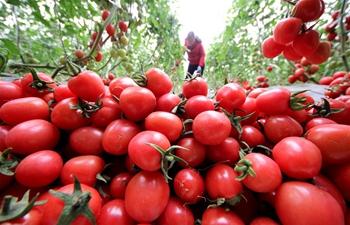ROME, March 4 (Xinhua) -- Italy and France are the world's two biggest winemaking nations, each responsible for around a fifth of global commercial production by volume. But in China, Italian wine remains a comparative afterthought.
Italy was the world's largest wine producer in 2017 (the latest full-year figures available), producing 49 million of the world's 251 million hectoliters of wine, according to the International Organization of Vine and Wine. France was second, with 47 million hectoliters.
Italian wine exports to China grew by about a third over a two-year span ending last year, according to estimates from Wine Intelligence, a London-based industry data firm. But according to Wine News, an Italian industry website, Italy has since given some of those gains back. France remains a strong leader in the fast-growing imported sector.
MOST APPETIZING EMERGING MARKET
"China is the world's most appetizing emerging wine market, and Italy is making up for lost time there," Francesca Filippone, founder and managing director of L3, a food and wine consultancy focusing on China, told Xinhua. "But France has tremendous advantages in terms of image and familiarity."
One major initiative aimed at increasing visibility of Italian wines in China is a soon-to-be-published dictionary of Italian wine in Chinese, the first book of its kind. The "Italian-Chinese Bilingual Dictionary of Wines and Vines," expected to be on sale in April, is aimed at resolving the ambiguity of wine and grape names when they are translated into Chinese.
"We cover around 600 different grape varieties grown commercially in Italy," Marta Valenti, director of the Confucius Institute at the University of Milan and one of the authors of the dictionary, said in an interview.
Bettina Mottura, another dictionary author and a professor of Chinese language and culture at the University of Milan, added: "We want to help Italian wine take its appropriate place in China."
"If you go to an urban supermarket in China, the wine section will have five shelves of French wine, five or six for countries from the 'New World'," she said, using a term that refers to most non-European wine regions. "Perhaps there is half a shelf for Italian wines."
EFFORTS TO WIN CHINESE MARKET
Analysts held diverse opinions on how to help Italian wine gain more market share in China. Filippone, for example, said the Italian government should help negotiate bilateral tax agreements that would include wine exports. Valenti and Mottura said steps should be taken to familiarize Chinese consumers with Italian wine. For example, specific logograms should be developed to refer to specific types of wine. Others talked about latching Italian wine onto the country's fashion industry, where Italy has a strong image.
According to Lorenzo Tersi, a commercial advisor for the wine industry, Italy should look to promote its wines in general terms, rather than having different Italian regions competing against themselves. As it is, promotional efforts are often initiated by single producers or by regional consortia.
Tersi also suggested promoting "wine tourism" for Chinese visitors to Italy, based on the idea that if they see where and how Italian wines are made they would be more likely seek out Italian wines when they return home.
"There's no need to differentiate between wines from Piedmont, Tuscany, Sicily, or wherever," Tersi said in an interview. "If Italian wines are better understood and demand is higher, then all the wine regions will benefit."
Gianni Gagliardo, owner of a wine estate and a frequent visitor to China, predicts great things for the Chinese wine market, and he is convinced Italy will play a central role.
"In another 10 or 15 years, China will be the world's most important market for great red wines," Gagliardo told Xinhua. "There are stages in the development of a market. What is happening now is that consumers are starting to see wine as an important part of a good meal."













